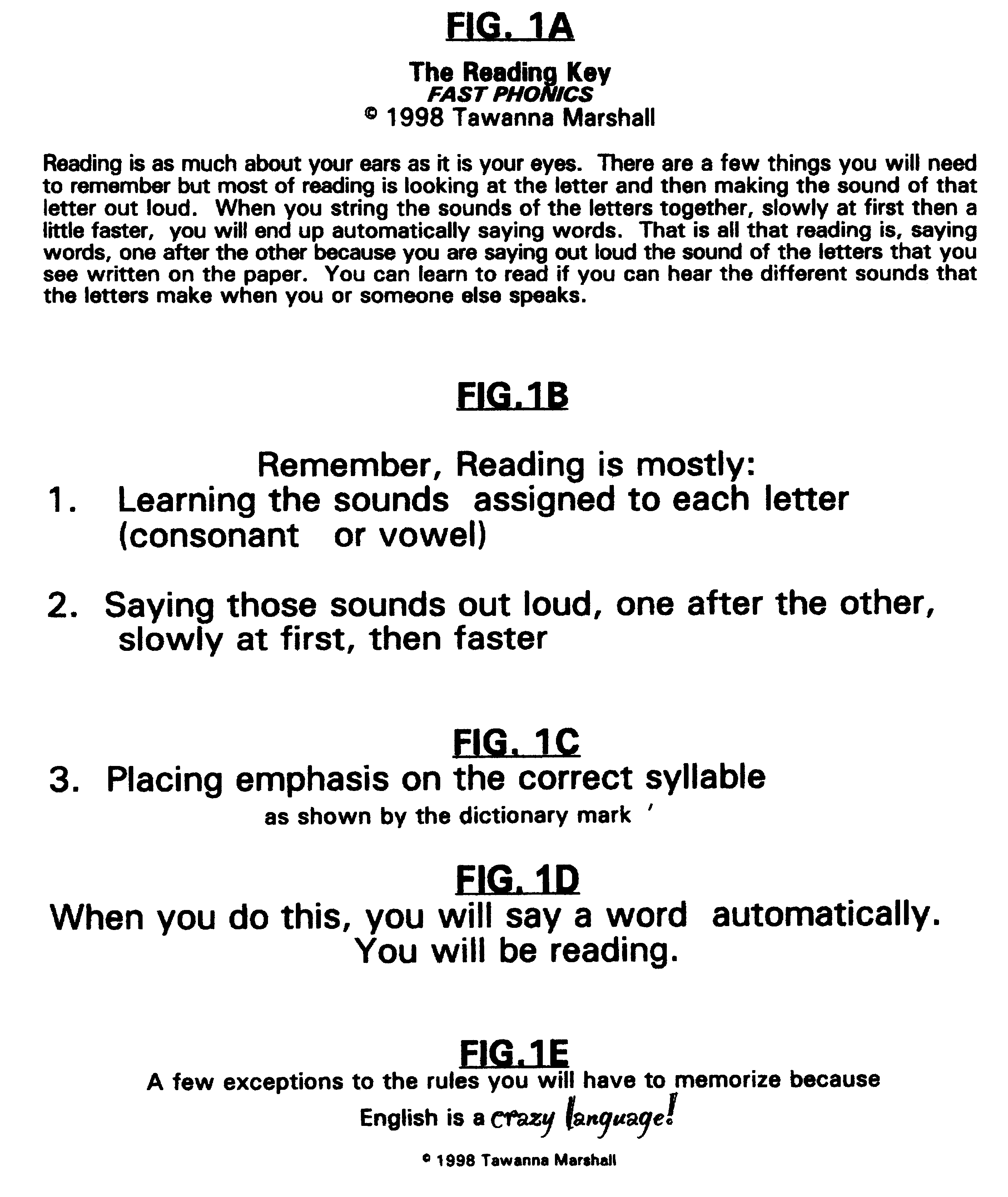Method and materials for teaching the phonetic code and repairing self esteem
a phonetic code and self-esteem technology, applied in the field of phonetic code and self-esteem repair, can solve the problems of lowering self-esteem, experiencing emotional and psychological pain, missing some essential parts, etc., and achieve the effects of reducing negative emotions, boosting self-esteem, and minimizing negative self-image and related emotional problems
- Summary
- Abstract
- Description
- Claims
- Application Information
AI Technical Summary
Benefits of technology
Problems solved by technology
Method used
Image
Examples
Embodiment Construction
of How the Written Materials are Used in This Inventive Method
The written materials have been designed to accomplish several goals, which are to:
1. Provide appropriate visual clues that component phonics instruction
2. overcome the problems in most reading programs that confuse the learner
a. with instruction that is illogically ordered, and
b. that prompts the learner to depend on visual clues that are inconsistent with the task of learning listening skills, the backbone of phonics instruction
3. appeal to older learners without adding further emotional insult, and
4. be usefull in repairing some of the existing psychological damage resulting from the person's inability to read
FIGS. 1a-d explain the three basic steps in reading which are: learning the sound of each letter, saying the sound out loud and placing emphasis on the correct syllable. FIGS. 2a and 2b provide a worksheet that allows space for writing words requested or words designed by the participant during the session. The pa...
PUM
 Login to View More
Login to View More Abstract
Description
Claims
Application Information
 Login to View More
Login to View More - R&D
- Intellectual Property
- Life Sciences
- Materials
- Tech Scout
- Unparalleled Data Quality
- Higher Quality Content
- 60% Fewer Hallucinations
Browse by: Latest US Patents, China's latest patents, Technical Efficacy Thesaurus, Application Domain, Technology Topic, Popular Technical Reports.
© 2025 PatSnap. All rights reserved.Legal|Privacy policy|Modern Slavery Act Transparency Statement|Sitemap|About US| Contact US: help@patsnap.com



